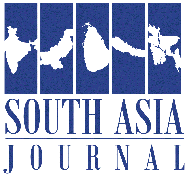The recent Pahalgam attack on April 22, 2025, which killed 26 civilians in Indian-administered Kashmir, has once again triggered a predictable chain reaction in South Asia. True to form, India immediately blamed Pakistan, ignoring procedural norms of investigation and bypassing international legal mechanisms. The result: heightened tensions, a surge in hostile rhetoric, and a narrowing space for dialogue. Amidst this familiar script, Pakistan has opted for a measured, diplomatic, and responsible response—an approach that reflects both restraint and resolve.
In the immediate aftermath of the Pahalgam tragedy, Indian officials and media outlets swiftly pinned the blame on alleged Pakistan-based militant groups. This reflexive accusation came without forensic evidence, intelligence assessments, or credible investigations. Unfortunately, this is not an isolated occurrence. India has a long-standing tendency to attribute attacks on its soil to Pakistan before independent inquiries can determine accountability. From the 2001 Indian Parliament attack to the 2019 Pulwama bombing, the pattern has remained consistent: assign blame, isolate Pakistan diplomatically, and ramp up militarized responses. This knee-jerk blame game not only undermines the credibility of investigations but also exacerbates bilateral tensions unnecessarily. By externalizing internal security failures, Indian authorities avoid confronting their own lapses in counterterrorism and law enforcement.
In stark contrast, Pakistan’s response has been grounded in diplomacy and international engagement. Within days of the Pahalgam incident, Pakistan’s Ambassador to the United Nations, Asim Iftikhar Ahmad, briefed envoys of the Organisation of Islamic Cooperation (OIC) in New York. He warned of India’s “provocative measures” and highlighted the risk these posed to regional peace and stability. The OIC envoys expressed solidarity with Pakistan’s position, emphasizing their commitment to peaceful resolution and justice. Simultaneously, Prime Minister Shehbaz Sharif held meetings with ambassadors of Saudi Arabia, Kuwait, and the UAE in Islamabad. He underscored Pakistan’s commitment to peace and requested these influential Gulf states to use their diplomatic channels to encourage India toward de-escalation.
Despite Pakistan’s diplomatic overtures, India has chosen a path of escalation. Indian actions in the past weeks include expelling Pakistani diplomats on unsubstantiated charges, halting key bilateral dialogues, and threatening to revisit the Indus Waters Treaty—a cornerstone of water-sharing stability since 1960. More troubling are reports of Indian troop build-ups along the Line of Control and increased sorties by Indian Air Force jets near Pakistani airspace. These moves mirror the post-Pulwama environment of 2019, where India carried out “surgical strikes” and air raids across the border, leading to a dangerous aerial confrontation between the two nuclear-armed states. By raising the stakes militarily, India risks repeating history—except that with each round of escalation, the margin for error shrinks dangerously.
Faced with this hostile environment, Pakistan has adopted a policy of strategic restraint while maintaining credible deterrence. Rather than retaliate tit-for-tat, Pakistan has prioritized diplomacy, internationalizing the issue through multilateral forums like the OIC, the UN, and bilateral engagements with key Gulf and Western allies. This approach signals Pakistan’s desire to avoid conflict while reserving the right to defend its sovereignty. Pakistan’s military leadership has also reiterated its readiness to respond decisively to any aggression. However, it has avoided inflammatory rhetoric and refrained from actions that could trigger an unintended escalation. This careful balance between restraint and deterrence underlines Pakistan’s maturity as a responsible actor in a volatile neighborhood.
The stakes in this crisis extend far beyond the borders of India and Pakistan. A conflict between these nuclear-armed neighbors would destabilize not only South Asia but also global markets, energy corridors, and geopolitical alignments. Major powers—including the United States, China, Russia, and the European Union—cannot afford to remain bystanders. Their collective responsibility lies in urging restraint, encouraging back-channel diplomacy, and discouraging unilateral escalatory measures. Unfortunately, the international community has often been reactive rather than proactive in South Asia. The current crisis is a reminder that early intervention, quiet diplomacy, and sustained engagement are essential to prevent crises from spiraling into wars.
While Pakistan’s commitment to peace remains steadfast, it is imperative that India reciprocate. Escalatory policies, unilateral blame, and militarized posturing will not yield durable security. Instead, both nations must return to the negotiating table, revive suspended dialogues, and explore confidence-building measures that reduce the risk of miscalculation.
Pakistan’s response to India’s provocations following the Pahalgam attack reflects a clear commitment to peace, diplomacy, and international law. By choosing restraint over retaliation, Pakistan has demonstrated statesmanship under pressure. Yet, this path of responsibility cannot be walked alone. India must meet Pakistan halfway, abandon its blame-centric approach, and embrace dialogue as the only viable solution. The world is watching. South Asia’s future depends on whether its leaders choose engagement over escalation, wisdom over bravado, and peace over peril.

